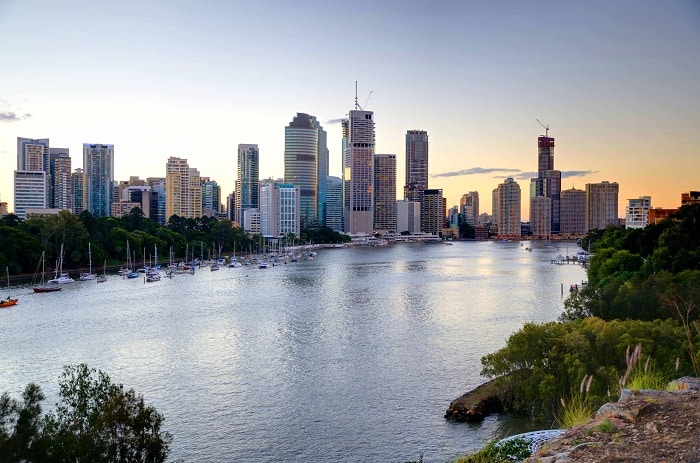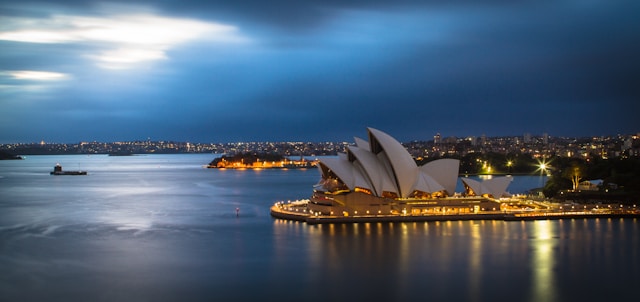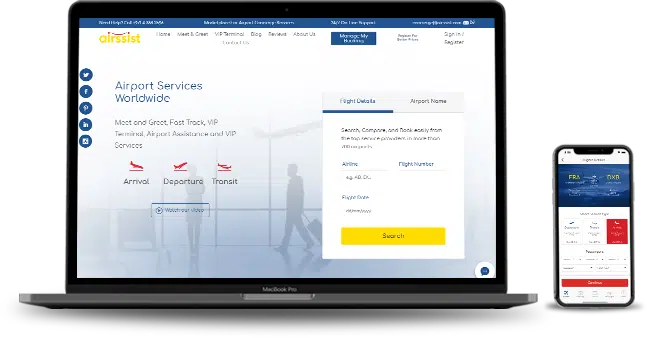Table of Contents
Traveling from the USA to Australia is an exciting adventure, offering stunning landscapes, vibrant cities, and unique wildlife. However, preparing for such a trip requires careful planning, especially when considering the distance, time difference, and cultural nuances. This guide will take you through essential tips for traveling from the USA to Australia, covering everything from visa requirements to travel tips and frequently asked questions.
1. Check Visa Requirements
Before purchasing your flight, make sure you have the appropriate visa. All U.S. citizens need a visa or an Electronic Travel Authority (ETA) to enter Australia. The application process is quick and can be done online.
- A visitor visa costs about USD 145 and is valid for three months.
- Processing times vary, so apply well in advance to avoid last-minute stress.
Pro Tip: Save your visa confirmation digitally and carry hard copies during your travel.
2. Verify Passport Validity
Ensure your passport is valid for at least six months beyond your travel dates. Although Australia does not enforce this rule, some airlines may, especially if you’re transiting through a third country. Also, make sure your passport has at least four blank pages for visa stamps.
3. Book Flights Strategically
Flights from the USA to Australia are long-haul, typically taking 15-20 hours depending on the route.
- Layovers: Consider flights with stopovers if you need to stretch and refresh during the long journey.
- Direct Routes: Nonstop options are available from cities like Los Angeles (LAX) to Sydney (SYD) or Melbourne (MEL).
- Comfort Upgrades: Choose premium economy or business class if your budget allows, as these long flights can be exhausting.
4. Carry Hard Copies of Essential Documents with You at All Times.
Carrying hard copies of essential travel documents such as passports and visas is a proactive measure to mitigate the inconvenience and stress that can arise from unforeseen circumstances like lost luggage or stolen items. In the event of a passport loss, having duplicate visas on hand can significantly streamline the process of obtaining replacements, particularly when faced with the challenge of securing consulate appointments abroad, which can often be booked out for months in advance. This precaution ensures that you can face potential travel disruptions with ease if you have not booked for an airport concierge service that helps passengers and continue your journey without unnecessary delays or complications.
5. Maintain Written Records of Important Contact Numbers.
Maintaining written records of essential contact numbers is a simple yet indispensable practice for travelers. Anecdotes like the one shared highlight the potential pitfalls of relying solely on digital devices, especially in moments of forgetfulness or technical mishaps. By having key phone numbers written down and easily accessible, travelers can be prepared for unexpected situations with greater ease and efficiency. This practice not only ensures connectivity in emergencies but also serves as a valuable backup plan and an important tip during solo travel adventures, where self-reliance is paramount. Overall, it’s a small but impactful step towards enhancing preparedness and peace of mind while exploring the world.
6. Review Your I-94 Entry Record for Accuracy.
Reviewing your I-94 entry record is crucial when traveling to the U.S. This document holds significant importance as it determines the validity of your stay in the country, regardless of your visa type. Each time you enter the U.S., a new I-94 entry record is issued, which may differ from your previous entries. It’s essential to verify the accuracy of this record, as it specifies the duration of your stay permitted by immigration authorities. While visas such as ESTA or E-3 may grant entry, the I-94 ultimately governs your lawful presence in the U.S. Consulting this record online or through legal assistance ensures compliance with immigration regulations and avoids any discrepancies that may arise during your stay.
7. Monitor Expiry Dates for Partner Visas if Applicable in Australia.
Keeping track of the expiry dates for partner visas is vital for individuals residing in Australia with foreign partners. Regardless of the stage of visa processing, it’s imperative to monitor the five-year validity period closely. As this deadline approaches, taking proactive steps becomes crucial to ensure uninterrupted residency status. Failure to renew the partner visa before expiry could lead to complications when returning to Australia. Therefore, staying vigilant about these dates is essential to maintain legal status and facilitate exquisite travel arrangements.
8. Prepare for Time Zone Differences
The time difference between the USA and Australia ranges from 14 to 19 hours. This can make adjusting to the local time challenging.
- Begin adjusting your sleep pattern ahead of departure.
- Use apps like Timeshifter to plan your sleep and meals during the flight.
9. Understand Cultural Etiquette
While both countries share English as a primary language, cultural differences exist:
- Social Norms: Australians value humility and may downplay achievements, a trait known as “tall poppy syndrome.”
- Tipping Practices: In the U.S., tipping is customary, typically 15-20% in restaurants. In Australia, tipping is appreciated but not obligatory.
Tip: Observe local behaviors and when in doubt, ask locals or service staff about customary practices.
10. Stay Informed About Health and Safety Regulations
Health and safety guidelines can change; stay updated on:
- Vaccination Requirements: As of recent updates, travelers to Australia are not required to provide evidence of vaccination status.
- Mask Mandates: Mask-wearing on international flights to Australia is no longer mandatory, but it’s advisable to carry masks for personal safety.
Tip: Regularly check official government websites for the latest travel advisories and health guidelines.
11. Anticipate Potential Flight Changes or Travel Disruptions.
Prepare for any potential flight changes and disruptions, common in both the U.S. and Australia, by incorporating contingency plans into your travel preparations. This may involve budgeting extra time and funds for unexpected situations like accommodation needs. Considering that certain delays may not be covered by travel insurance, having backup plans is essential. Additionally, being aware of tips to optimize layovers can truly add value to your travel experience. Overall, flexibility and preparedness are key to mitigating the impact of disruptions and ensuring a smoother journey.
12. Allow Extra Time for Security Procedures, Especially at Busy Airports.
Allow extra time for security procedures at busy airports, as lines managed by TSA, CBP, and Australian Customs and Border Force can be lengthy. Consider exploring and learning everything you need to know about fast tracking services at airports to expedite the process before your journey. Be patient and prepared for longer wait times, especially at immigration and during check-in, and bring snacks and entertainment to stay occupied. Stay updated with information from relevant authority websites close to your travel date.
Expect longer wait times for security.
Be ready to wait a long time at U.S. security lines, including TSA and immigration queues. It can take a long time to get through other nations with the appropriate authorities.
Be patient; agencies like the TSA, CBP, and Australian Customs and Border Force have tasks to complete. For up-to-date information, it’s a good idea to visit their websites near your destination.
These will be longer than normal, so be ready when you arrive at immigration or even when you check in for domestic flights. If you’re traveling with kids, senior citizens, etc., prepare some refreshments, entertainment, or other activities to occupy you while you wait.
13. Leverage Technology for Convenience
Utilize digital tools to enhance your travel experience:
- Travel Apps: Download apps for flight tracking, language translation, and local navigation.
- Digital Payments: Ensure your credit cards are set up for international use, and consider mobile payment options for ease.
Tip: Inform your bank of your travel plans to prevent any disruptions in your card services.
14. Familiarize Yourself with the Specific Challenges of Los Angeles Airport (LAX)
Prepare for the specific challenges of Los Angeles Airport (LAX), known for its sprawling layout and congestion. Allocate extra time for walking between terminals and baggage collection, especially if traveling with elderly or young companions. Despite the airport’s complexity, the international terminal offers a quieter atmosphere, particularly for late-night flights to Australia.
15. The Australian dollar is used as the local currency.
The Australian dollar is the currency of Australia. The bright, plastic notes they come in are called “notes,” not “bills.” For $1 and $2, they also utilize golden coins.
- 1 US Dollar = 1.39 AUD
- 1 Euro = 1.64 AUD
- 1 British Pound = 1.80 AUD
- 1 Chinese Yuan = 0.21 AUD
- 1 Japanese Yen = 0.013 AUD
- 1 New Zealand Dollar = 0.93 AUD
16. In case of an emergency, dial 000
Different countries have different emergency phone numbers.
Fortunately, the code is as simple as 000 in Australia. Although it is hoped that you would never need to use that number, it is helpful to know in case of an emergency.
Top Things to Do in Australia: Ultimate Travel Guide
Once you’ve covered the essential Australia travel tips and you’re ready to plan your trip, it’s time to focus on the most exciting part figuring out what to do once you’re there. With its massive size and diverse natural beauty, Australia offers an endless variety of experiences to suit every traveler’s interests.
Whether you’re into adventure sports, cultural experiences, nature, or relaxation, Australia has something for everyone. From coral reefs and iconic cities to rugged wilderness and coastal road trips, here’s a roundup of some of the best things to do across the country.
Snorkel the Great Barrier Reef
Australia’s Great Barrier Reef is the largest coral reef system in the world and one of the planet’s most breathtaking natural wonders. Stretching along most of Queensland’s coastline, it offers countless spots for snorkeling and diving. Towns like Cairns, Port Douglas, Airlie Beach, and Townsville are popular gateways to the reef. While tours can be a bit pricey—usually around $200—they provide an unforgettable chance to witness vibrant marine life and coral ecosystems up close.
Explore Sydney Harbour
One of Australia’s most iconic spots, Sydney Harbour is home to famous landmarks like the Sydney Opera House, the Sydney Harbour Bridge, and the Royal Botanic Garden. You can explore the harbor on foot, by ferry, or even by climbing the bridge for a panoramic view. One day is usually enough to experience the highlights, so bring your camera and walking shoes.
Discover Brisbane
Brisbane, the capital of Queensland, is known for its warm weather, creative energy, and laid-back atmosphere. There’s plenty to do here—check out the galleries and cafes of South Bank, walk along the Brisbane River, shop at Riverside Markets, and enjoy sweeping views from Mount Coot-tha. With museums, music venues, and green spaces, it’s worth spending at least a couple of days exploring.
Watch the Sunrise or Sunset at Uluru
Located in the heart of the Northern Territory, Uluru (also known as Ayers Rock) is a massive sandstone monolith sacred to the Indigenous Anangu people. Watching the colors of the rock change during sunrise or sunset is a powerful experience. The nearby town of Alice Springs is a great base for booking guided tours or overnight camping trips that include cultural education and stargazing.
Go Wine Tasting in Australia’s Vineyards
Australia is renowned for its wine, with many world-class wine regions scattered across the country. Some of the most popular areas include Barossa Valley in South Australia, Yarra Valley in Victoria, Hunter Valley in New South Wales, and Margaret River in Western Australia. Wine tours often include tastings, vineyard walks, and behind-the-scenes access to the winemaking process, making for a delicious and educational day trip.
Learn to Surf on the East Coast
Australia’s coastline is a surfer’s dream. Whether you’re a complete beginner or an experienced wave rider, there’s a beach for you. Great beginner spots include Bondi Beach in Sydney, Noosa and Burleigh Heads on the Gold Coast, and Byron Bay in northern New South Wales. Surf schools are easy to find, and lessons are typically affordable and fun, making this a must-try Aussie experience.
Experience Melbourne’s Culture
Melbourne, the capital of Victoria, is a vibrant and creative city filled with street art, live music, amazing coffee, and hidden laneways. Explore the neighborhoods of Fitzroy, St Kilda, and Carlton, visit the National Gallery of Victoria, and stop by the Queen Victoria Market. Melbourne is also a food lover’s paradise, offering a global mix of cuisines and an energetic nightlife.
Drive the Great Ocean Road
The Great Ocean Road is one of Australia’s most scenic drives, stretching 243 kilometers along Victoria’s southern coast. Starting in the surf town of Torquay, the route features coastal cliffs, beach towns, and the dramatic rock formations of the Twelve Apostles. Other highlights include waterfalls in the Otways and the chance to spot koalas in the wild. The drive can be done over one or two days and is a great way to explore at your own pace.
Explore Tasmania’s Wilderness
Tasmania, an island state off the southern coast of Australia, is packed with natural beauty and adventure. Start in the capital city of Hobart with its markets, museums, and cafes, then venture out to places like Cradle Mountain, Wineglass Bay, and the Bay of Fires. The island is ideal for hiking, wildlife spotting, and sampling local produce from farms and markets.
Trek Through Kakadu National Park
Kakadu, located in the Northern Territory, is the largest national park in Australia. Known for its dramatic landscapes, Aboriginal rock art, and abundant wildlife, it’s a destination for travelers seeking a deeper connection with nature and history. Explore waterfalls like Jim Jim and Twin Falls, take a boat ride on Yellow Water Billabong, and visit ancient rock art sites like Ubirr and Nourlangie.
Sail Through the Whitsunday Islands
Located in the heart of the Great Barrier Reef, the Whitsunday Islands are known for their clear waters, coral reefs, and pristine beaches. With 74 islands to choose from, you can explore by day tour, overnight sailing trip, or luxury cruise. Whitehaven Beach is a must-see, often ranked among the most beautiful beaches in the world. Snorkeling and swimming in the reef’s turquoise waters is a highlight of any trip.
Airports to Use When Traveling to Australia & Airport Concierge Services by airssist
Australia is a massive country, so where you fly into will depend on your itinerary and which region you’re starting your adventure in. The country has several major international airports that serve as gateways to different parts of the continent.
Top International Airports in Australia:
- Sydney Kingsford Smith Airport (SYD) – The busiest and most popular international airport, located in New South Wales. Ideal for travelers starting in Sydney, the Blue Mountains, or planning to explore the East Coast.
- Melbourne Airport (MEL) – Serves Victoria and is great for those wanting to explore Melbourne, the Great Ocean Road, or begin a southern Australia trip.
- Brisbane Airport (BNE) – Perfect if you’re heading to Queensland to visit the Great Barrier Reef, Gold Coast, or Sunshine Coast.
- Perth Airport (PER) – The main hub for Western Australia. Use this airport if you’re visiting places like Margaret River, Exmouth, or Broome.
- Adelaide Airport (ADL) – Convenient for accessing South Australia, including the Barossa Valley and Kangaroo Island.
- Cairns Airport (CNS) – A smaller international airport that offers direct access to the tropical north, perfect for trips to the Great Barrier Reef and Daintree Rainforest.
When is the best time to visit Australia?
With its dewy rainforests, sandy plains, snowy alps, and sunny beaches, Australia harbors tropical, subtropical, desert, and temperate climates. When packing your baggage or organizing your trip, temperature and climate are crucial factors to take into account because our seasons are contrary to those of the Northern Hemisphere. To help you decide when to travel to Australia, don’t forget to take into account peak seasons, amazing animal events, and thrilling festivals.
Summer: December to February
In the largest capital cities, the average daily temperature throughout the summer months is between 20°C and 37°C (68°F and 99°F).
March through May is autumn.
In the fall, temperatures begin to drop a little, averaging between 17°C and 35°C (63°F and 95°F).
Winter: June to August
The average temperature during the winter months is between 11°C (52°F) in the south and 30°C (86°F) in the north.
Spring: September to November
From south to north, springtime average daily temperatures range from 17°C to 35°C (63°F to 95°F).
Make Your Travel from USA to Australia Smoother with airssist Airport Concierge
If you’re looking to make your arrival and departure experience seamless, airssist offers premium airport concierge services at all major Australian airports. Whether you’re landing in Sydney, Melbourne, Brisbane, or Perth, airssist can elevate your airport experience with:
- Fast-track immigration and security
- Personal VIP greeters
- Porter services for your luggage
- Lounge access while you wait
- Assistance for business travelers or families
This is a great option if you’re arriving after a long-haul flight, want to skip queues, or simply prefer a more comfortable and personalized airport experience. You can book your airssist concierge service in Sydney Airport here.
Having a smooth airport experience can really set the tone for your entire trip, and airssist helps ensure you start your Australian adventure stress-free.
FAQs
1. Do U.S. citizens need a visa to travel to Australia?
Yes, all U.S. travelers need a valid visa or Electronic Travel Authority (ETA) to enter Australia. Applications can be made online.
2. What’s the best time to visit Australia?
Australia’s seasons are opposite to those in the USA. The best time to visit depends on your destination and activities. For example, winter in Australia (June to August) is ideal for exploring the Outback or tropical north, while summer (December to February) is great for beaches in Sydney or Brisbane.
3. What are Australia’s COVID-19 entry requirements?
Currently, no vaccination proof or Digital Passenger Declaration is required to enter Australia. However, regulations may vary with airlines, so it’s best to confirm before traveling.
4. Can I drive in Australia with my U.S. license?
Yes, you can drive in Australia using a U.S. driver’s license, but it must be in English. If it’s not, an International Driving Permit (IDP) is required. Also, remember that Australians drive on the left side of the road.
5. What are some must-see attractions in Australia?
Australia offers diverse attractions, including the Sydney Opera House, Great Barrier Reef, Uluru, and the Great Ocean Road. Plan your itinerary based on the states you’re visiting.
6. Are there any luggage restrictions for flights to Australia?
Luggage policies vary by airline, so check your airline’s website for specifics. Be mindful of Australian biosecurity regulations, which prohibit certain items.
Final Thoughts
Traveling from the USA to Australia is a once-in-a-lifetime experience packed with adventure, culture, and stunning scenery. By planning ahead and keeping these tips in mind, you can ensure a smooth and enjoyable trip. Whether you’re exploring the vibrant streets of Sydney, snorkeling in the Great Barrier Reef, or road-tripping along the Great Ocean Road, your Australian adventure awaits.
Note: Please note that the information on this page is generic & subject to change due to fluctuations in airport services. Kindly confirm service availability with our team, as offerings may vary daily.
 French | Français
French | Français Spanish | Espana
Spanish | Espana German | Deutch
German | Deutch Arabic | العربية
Arabic | العربية Chinese | 中文(简体)
Chinese | 中文(简体) Japanese | 日本語
Japanese | 日本語





